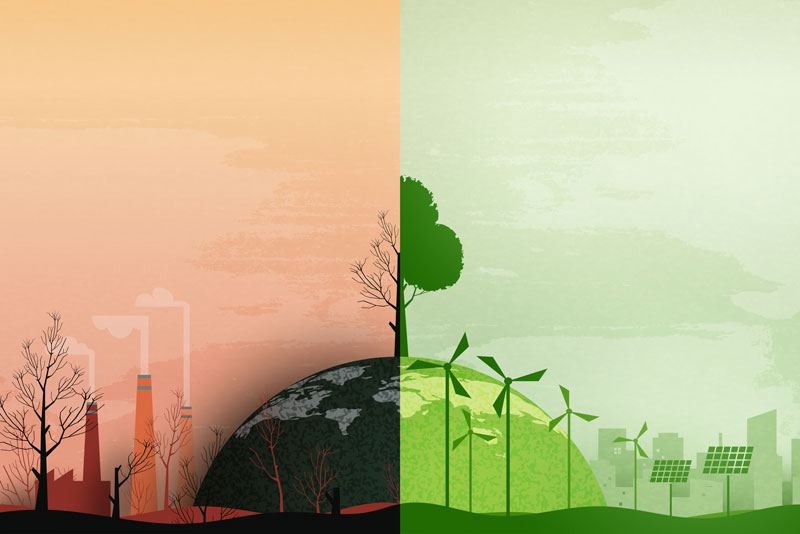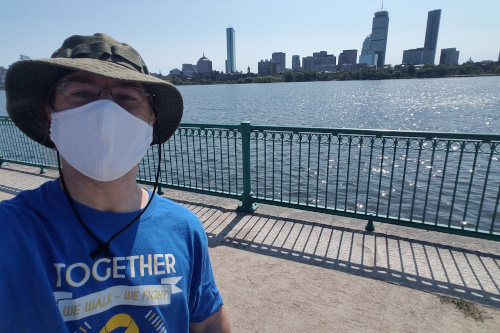Climate change presents an existential threat to humanity and planet Earth, but we don’t have to wait for a doomsday scenario to see there are already real consequences affecting everyone this summer and fall.
This year Spain already hit 110 degrees — a record heat. Texas temperatures reached 112 degrees in May. Before summer even started, a heatwave in Kansas killed 2,000 cattle, threatening food sources.

If you’re sweating and sitting in the dark, blame the scorching temperatures.
According to a Department of Energy report on the electrical grid reliability in the United States, 90% of power outages in the U.S. are due to failures in electrical distribution systems, typically due to weather damage to poles or wires. Heat waves, blizzards, thunderstorms, and hurricanes can all down vital power lines.
Danger season
Feeling hot in the summer isn’t revolutionary. However, average temperatures continue to rise, and the rain causing mass flooding across the country is attributed to what is regarded as climate change.
The heat is dangerous to people and the materials that built our infrastructure, buildings, and more.
“Summer has become the danger season where you see these kinds of events happening earlier, more frequently, and co-occurring,” Rachel Licker, principal climate scientist at the Union of Concerned Scientists, a research and advocacy group, told The Washington Post. “It just shows you how vulnerable our infrastructure is and that this is just going to get increasingly problematic.”
The Earth’s average temperature has already risen between 1.1 and 1.2 degrees Celsius (2.2 degrees Fahrenheit) above the preindustrial average, according to The Washington Post.
Camilo Mora, a climate scientist at the University of Hawaii at Manoa, told The Washington Post that by 2100, parts of the world could experience as many as six climate-related disasters simultaneously if humans do not cut down on greenhouse gas emissions.
More than 90% of scientists who study Earth’s climate agree that the planet is warming and that humans are the primary cause.
Sitting in the dark
The country’s infrastructure wasn’t designed to withstand this type of heat.
Experts warn simultaneous floods and high heat waves show that America isn’t ready for the actual impacts of climate change.
“Downed power lines, homes swept away amid flooding and overwhelmed stormwater systems highlight how little progress governments have made toward girding communities for extreme weather,” according to the Post.
Aside from the devastation flooding causes, when the power goes out either due to collapsed lines or excessive heat, people can be trapped in their homes, lose all their perishable food, or lose access to home medical care, such as devices that need to be charged or refrigerated medicine.
Keeping the lights on and temperatures down
To work to mitigate climate change as a whole, humans need to lower carbon emissions through lifestyle and business choices.
When specifically looking at building a resilient grid, a 2021 report by Dartmouth Engineering points to renewable energy sources as a way to boost the resilience of power grids.
In fact, when Texas had its blackout during the 2021 winter storm, solar power was the only energy source that outperformed expectations during that time.
Many states have already slowly transitioned to renewable energy sources, such as community solar or wind farms. However, speeding up that transition can help create a safety net for the grid when climate-change-induced natural disasters strike. In addition, switching to renewable energy has the bonus of lowering carbon emissions to help fix the original problem of climate change.

- 87% of Utilities Have Experienced at Least One Data Breach in Last Three Years - February 5, 2024
- Can Drones Lower Your Next Utility Bill? - January 10, 2024
- Onshore Wind Farms Are The Next Big Thing In Renewable Energy - December 6, 2023




